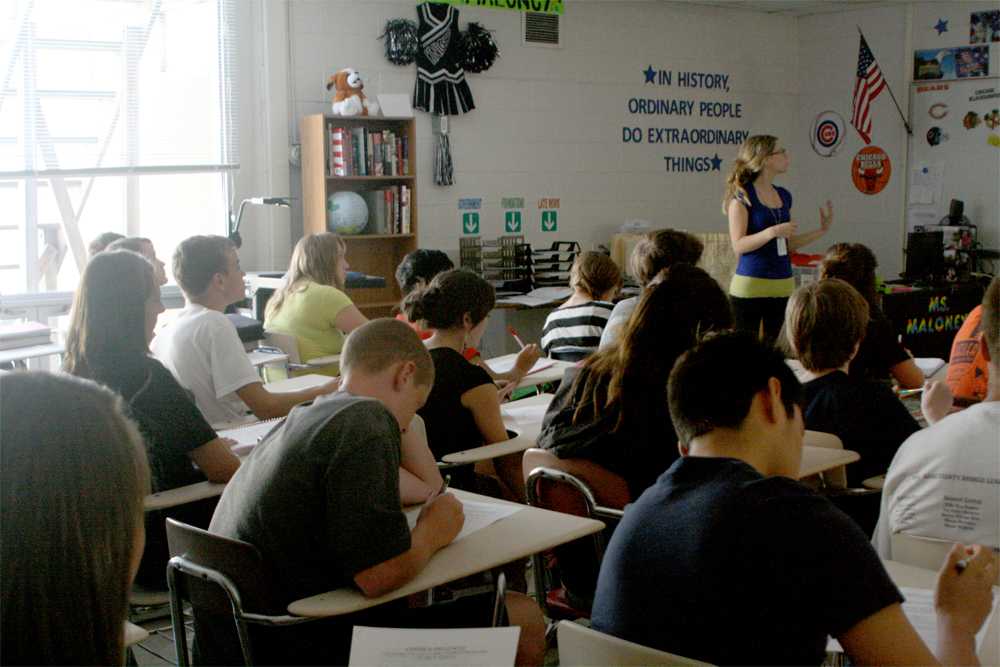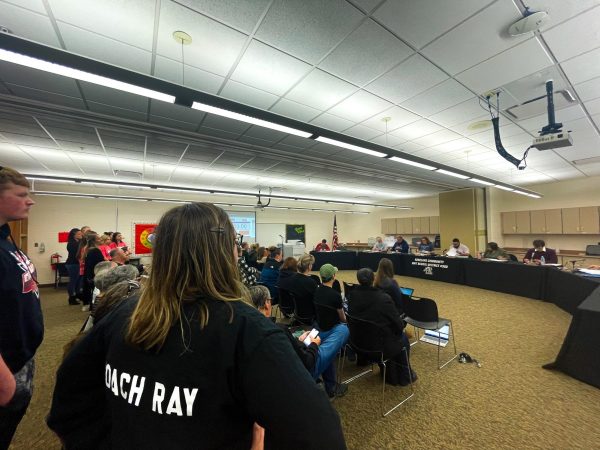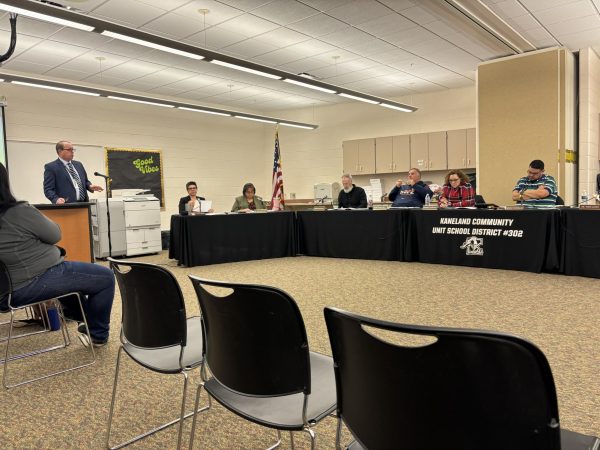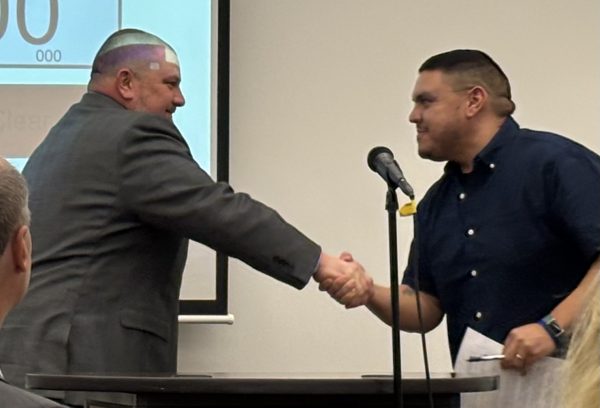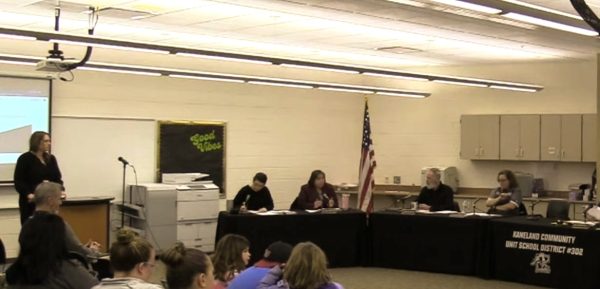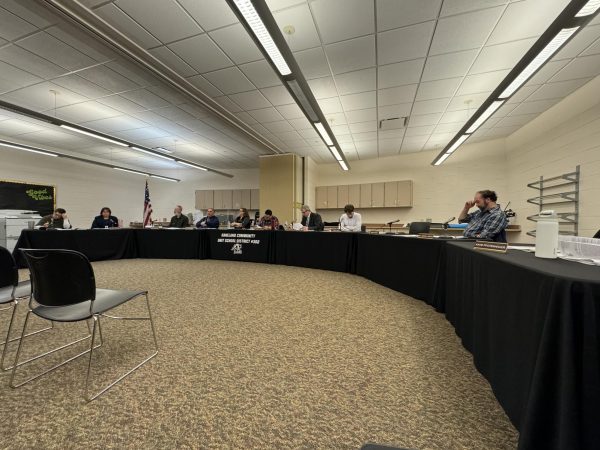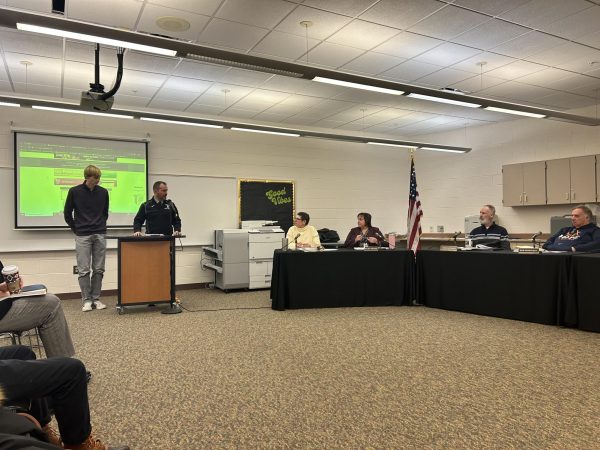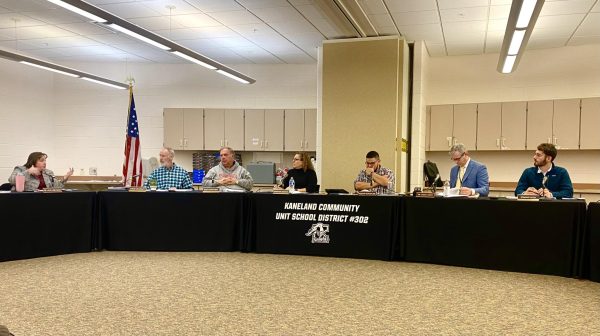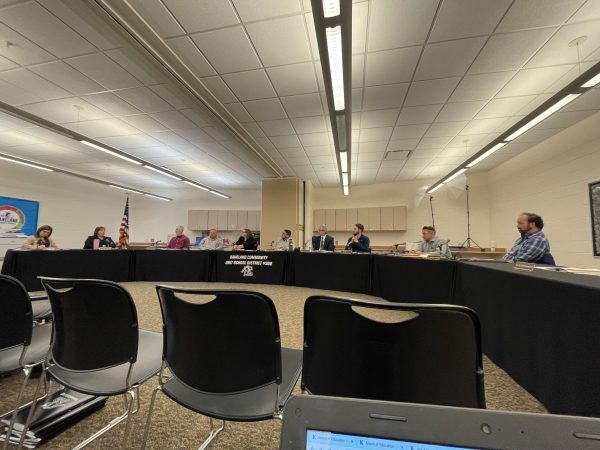Kaneland’s growing numbers
September 28, 2011
When walking into the crowded classrooms on the first day of school, it’s always stressful being one of the last few students to enter, having to look for an open seat. As class sizes grow at Kaneland, those seats become harder and harder to find.
“When I first started [five years ago], a class size of 26 was large. Now if we stay under 35, we’re happy,” math department chair Becky Rothecker said.
Illinois has a high debt percentage and Rothecker said that the large class sizes probably have something to do with the budget cuts.
“Because the district is on such a small budget, the district cannot hire more teachers, so less teachers equals bigger class sizes,” Rothecker said.
Erika Schlichter, curriculum coordinator, said that the budget always has an impact on the number of students per class but that the small budget makes it even harder.
“We [the administration] try as hard as we can to minimize the impact of any budget cuts on students,” Schlichter said.
Counselor Cynthia Violett said that she thinks KHS is “kind of equal to other schools right now [in terms of how big each class is] just because of budgetary restraints and not being able to hire new teachers.” However, she said that with all schools in general, the class sizes are too high.
Danielle Nowak, math teacher, said that last year she had to teach a class of 34 students in Analysis. According to her, it was very hard to get to know the kids and give them one-on-one time. She had to get extra desks for her large amount of students.
However, Schlichter said that class sizes shouldn’t affect students unless they get extremely large or extremely small and that Kaneland actually has a very good balance between classes and students.
Rothecker said that the main concern with larger classes happens to be with students who are shy and don’t participate as much. It’s harder for teachers to remember who’s been called on and who hasn’t if they have a large class.
Rothecker said required classes such as Algebra I, II and Geometry tend to be very crowded. She tries to keep classes in the math department under 30 students, but core classes seem to be the hardest to maintain a low class size. Violett said a major problem is that bigger classes provide “less individual instruction and attention on each student.”
“In English, we focus a lot of time on writing, grading papers and getting them back takes a lot of time [with a larger class],” English department chair James Horne said.
He thinks that larger class sizes are making it so “students aren’t getting the attention they need.”
Meanwhile, Schlichter said that class sizes only affect people when they let it affect them.
“Whether it’s a small class or a large class, I think that if the students take responsibility for their own learning by asking questions, keeping up with their work and paying attention in class; that’s gong to be the best way to get results,” Schlichter said.


